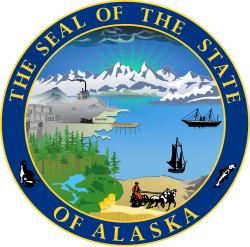| |||||||||||||||||
| |||||||||||||||||
 Results by state house district Stevens: 60–70% 70–80% 80–90% | |||||||||||||||||
| |||||||||||||||||
| Elections in Alaska |
|---|
 |
The 1984 United States Senate election in Alaska was held on November 6, 1984. Incumbent Republican Senator Ted Stevens sought re-election to a fourth term (a third full term) in the United States Senate. Owing to his popularity and the conservative bent of Alaska, Stevens did not face major opposition, and easily defeated former Alaska Attorney General John Havelock in the general election.

